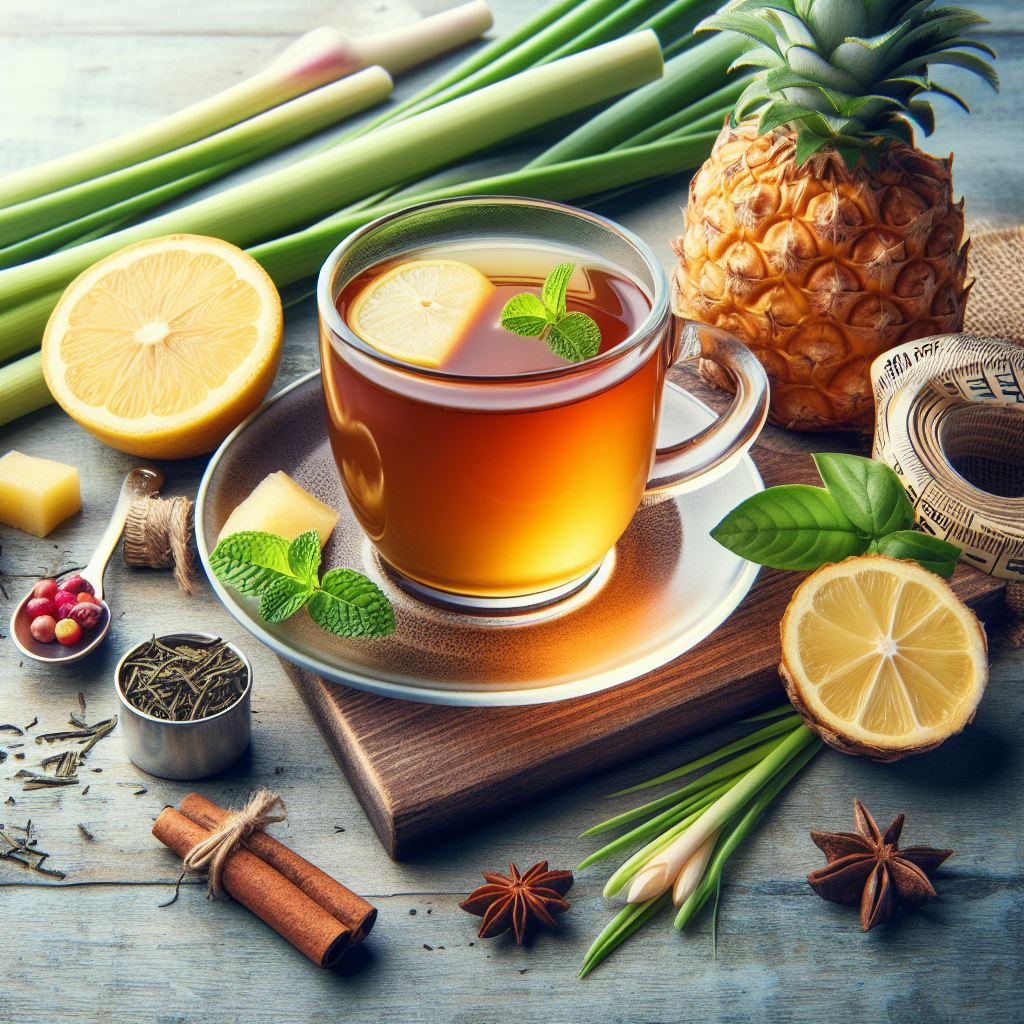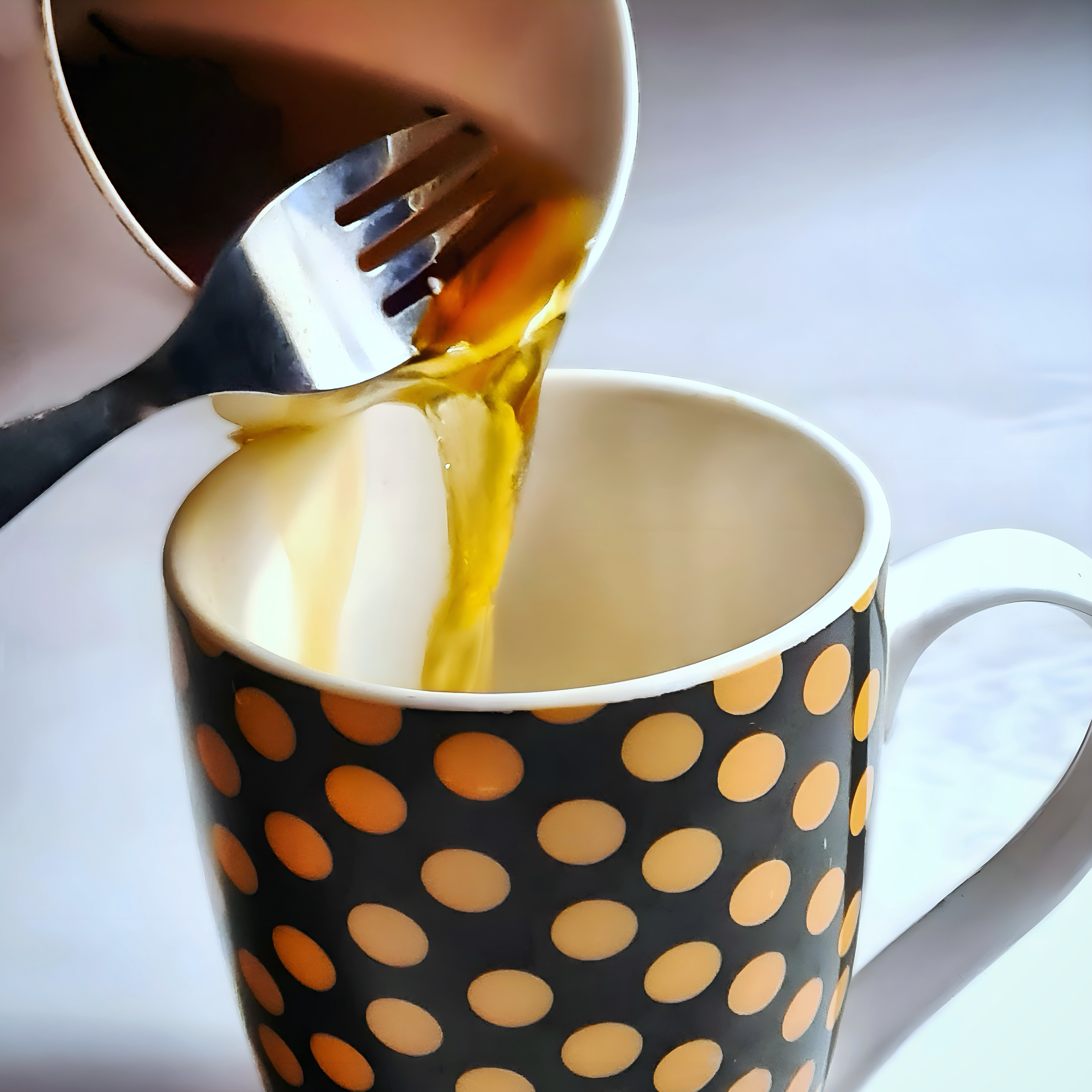Have you ever wondered what to do with those pesky yellow flowers that pop up in your lawn every spring? Well, you might be surprised to learn that they are not only edible, but also a valuable source for making tea. Yes, you read that right! Dandelion tea is a delicious and healthy beverage that you can easily make at home with just a few simple ingredients. So, if you are ready to discover the hidden gem of dandelion tea, keep reading!

Unveiling the Dandelion
Dandelions are more than just annoying weeds that ruin your lawn. They are actually a type of herb that belongs to the aster family, along with sunflowers, chamomile, and echinacea. Dandelions have even been used for centuries as a food and medicine by various cultures around the world.
Dandelion’s Cultural History
For example, the ancient Greeks and Romans used dandelions to treat liver problems, kidney diseases, and skin conditions. Moreover, The Chinese used dandelions to clear heat and toxins from the body, as well as to improve digestion and blood circulation. The Native Americans used dandelions to treat stomach aches, heartburn, and inflammation.
Health Benefits of Dandelion Tea:
One of the most popular ways to consume dandelions is by making tea from their leaves or roots. Dandelion tea is rich in vitamins A, C, K, and B complex, as well as minerals like iron, calcium, potassium, and magnesium. Dandelion tea also contains antioxidants, flavonoids, and other phytochemicals that have anti-inflammatory, anti-bacterial, and anti-fungal properties. Some of the health benefits of dandelion tea include:
- Detoxifying the liver and kidneys by stimulating bile production and urine flow
- Aiding in digestion and weight management by reducing bloating and appetite
- Boosting the immune system by fighting infections and enhancing white blood cell activity
- Improving skin health by clearing acne, eczema, and psoriasis
- Supporting bone health by preventing osteoporosis and arthritis
As you can see, dandelion tea is not only tasty but also beneficial for your health. But how do you make it? Let’s find out!
Gathering Your Ingredients
The first step in making dandelion tea is to gather your tools and ingredients. You will need:
- Fresh or dried dandelion leaves or roots
- Water
- A pot or kettle
- A strainer or cheesecloth (or find out How To Strain Tea Without a Strainer: 7 Easy Methods)
- A cup or mug
If you want to use fresh dandelion leaves or roots, you will need to harvest them yourself. The best time to do this is in the spring or early summer, when the plants are young and tender. You can find dandelions growing in your backyard, in parks, or in fields. However, make sure that the area is clean and free of pesticides or herbicides. You don’t want to drink any chemicals along with your tea!

How to Harvest Dandelions for Your Tea:
To harvest dandelions, you will need a pair of scissors or a knife, a basket or a bag, and some gloves. Cut off the leaves or dig up the roots from the base of the plant. Be careful not to damage the flowers or seeds, as they are important for pollination and reproduction. You can leave some plants behind for future harvesting or for the wildlife to enjoy!
Once you have collected enough dandelions, wash them thoroughly under running water. Remove any dirt or bugs that might be hiding in them. Then pat them dry with a paper towel or a cloth.
Using Dried Dandelion Leaves and Roots
If you want to use dried dandelion leaves or roots, you can either buy them from a health food store or an online retailer, or make them yourself. To dry your own dandelions, spread them out on a baking sheet or a tray in a single layer. Place them in a sunny spot or an oven at low temperature (around 100°F) for several hours until they are crisp and brittle. Store them in an airtight container away from light and moisture.
Mastering the Art of Brewing Dandelion Tea
Now you have harvested your dandelions, the next step is making the tea! There are different methods of brewing dandelion tea depending on whether you are using fresh leaves or dried roots. Here are some of the most common ones:
Hot Infusion
This is the simplest and fastest way to make dandelion tea. All you need to do is:
- Boil some water in a pot or kettle.
- Add one teaspoon of dried dandelion root or one tablespoon of fresh dandelion leaves per cup of water.
- Turn off the heat and let the mixture steep for 10 to 15 minutes.
- Strain the tea into a cup or mug using a strainer or cheesecloth.
- (optional) Add sugar, sweetener, or honey for added sweetness.
- Enjoy your hot dandelion tea!

Cold Brew
Cold-brewing tea is a great way to make dandelion tea if you want a more refreshing and milder taste. All you need to do is:
- Fill a jar or a pitcher with cold water.
- Add two teaspoons of dried dandelion root or two tablespoons of fresh dandelion leaves per quart of water.
- Cover the jar or pitcher with a lid or a cloth and place it in the refrigerator overnight or for at least 8 hours.
- Strain the tea into a cup or mug using a strainer or cheesecloth.
- (optional) Add lemon and mint to make it extra refreshing!
- Enjoy your cold dandelion tea!

Sun Tea
This is a fun and natural way to make dandelion tea using the power of the sun. All you need to do is:
- Fill a glass jar or a pitcher with water.
- Add two teaspoons of dried dandelion root or two tablespoons of fresh dandelion leaves per quart of water.
- Cover the jar or pitcher with a lid or a cloth and place it in a sunny spot for 4 to 6 hours.
- Strain the tea into a cup or mug using a strainer or cheesecloth.
- Enjoy your sun-drenched dandelion tea!

You can adjust the strength and taste of your dandelion tea by varying the amount of dandelions, water, and steeping time. You can also experiment with different brewing methods to find your favorite one. The main thing is to have fun and enjoy the process!
Enhancing the Dandelion Tea Experience
Now that you have learned how to make dandelion tea, you might want to enhance its flavor and experience by adding some extra ingredients. Here are some suggestions:
- Honey: This is a classic sweetener that goes well with any herbal tea. It can also soothe your throat and boost your immune system. Add as much as you like according to your taste buds.
- Lemon: This is a refreshing citrus fruit that can brighten up your dandelion tea. It can also help detoxify your body and improve your digestion. Squeeze some fresh lemon juice into your tea or add some lemon slices for extra flavor.
- Ginger: This is a spicy root that can add some warmth and zing to your dandelion tea. It can also help relieve nausea, inflammation, and pain. Grate some fresh ginger into your tea or add some ginger slices for extra flavor.
- Mint: This is a cooling herb that can complement the earthy taste of dandelion tea. It can also help freshen your breath and calm your nerves. Add some fresh mint leaves into your tea or use some mint tea bags for extra flavor.
Get Creative:
You can also mix and match different flavor combinations and add-ins to create your own unique dandelion tea blends. For example, you can try:
- Dandelion lemonade: Combine cold brewed dandelion tea with lemon juice, honey, and ice cubes for a refreshing summer drink.
- Dandelion smoothie: Blend cold brewed dandelion tea with frozen bananas, berries, yogurt, and honey for a nutritious breakfast or snack.
- Dandelion mocktail: Mix hot infused dandelion tea with fruits, juices, syrups, and lemonades for a warming winter drink.
The possibilities are endless! You can enjoy dandelion tea hot or cold, depending on the season or your preference. You can also drink it anytime of the day, as it is caffeine-free and won’t interfere with your sleep.
Dandelion Tea: Beyond the Cup
Dandelions are not only good for making tea, but also for other purposes. Here are some additional uses for dandelions beyond the cup:
Dandelion-infused oil:
You can infuse dandelions in olive oil, coconut oil, or any other carrier oil of your choice. This can be used as a massage oil, a moisturizer, or an ingredient for making salves, balms, or creams. To make dandelion-infused oil, you will need to:
- Fill a jar (with a lid) with dandelion flowers, leaving some space at the top.
- Pour a carrier oil of choice over the flowers until they are completely covered. Close the lid and shake the jar well.
- Place the jar in a sunny spot or a warm place for 2 to 4 weeks, shaking it every day.
- Strain the oil into a clean jar using a cheesecloth or a fine mesh. Label and store the oil in a cool and dark place.
Dandelion tincture:
You can extract the active compounds of dandelions in vinegar, or glycerin. This can be used as a dietary supplement, a medicine, or an ingredient for making syrups, tonics, or elixirs. To make dandelion tincture, you will need to:
- Fill a jar (with a lid) with dandelion leaves or roots, leaving some space at the top.
- Pour vinegar, or glycerin over the dandelions until they are completely covered.
- Close the lid and shake the jar well.
- Place the jar in a dark and cool place for 4 to 6 weeks, shaking it every day.
- Strain the tincture into a clean jar using a cheesecloth or a fine mesh. Label and store the tincture in a cool and dark place.
Dandelion Herbal Remedy:
You can use dandelions to treat various ailments, such as liver disorders, kidney stones, urinary tract infections, constipation, acne, eczema, psoriasis, arthritis, osteoporosis, and more. However, before using dandelions as a herbal remedy, you should consult your doctor or a qualified herbalist to ensure safety and effectiveness. Some of the ways to use dandelions as a herbal remedy are:
- Drinking dandelion tea regularly to cleanse your liver and kidneys, improve your digestion and metabolism, and boost your immunity.
- Applying dandelion-infused oil or salve to your skin to heal wounds, infections, inflammation, and irritation.
- Taking dandelion tincture or capsules to supplement your diet with vitamins and minerals, reduce water retention and bloating, and regulate your blood sugar and cholesterol levels.
- Adding dandelion leaves or flowers to your salads, soups, sandwiches, or smoothies to increase your intake of fiber and antioxidants.
As you can see, dandelions are not only good for making tea but also for other purposes. You can use them to enhance your health, beauty, and well-being in various ways. So next time you see those yellow flowers in your lawn or garden, don’t think of them as weeds but as gifts from nature!
Conclusion
We hope you enjoyed learning how to make dandelion tea from scratch, using both fresh leaves and dried roots. Dandelion tea is a delicious and healthy beverage that you can easily make at home with just a few simple ingredients. It also has many benefits for your health, beauty, and well-being, such as detoxifying your liver and kidneys, aiding in digestion, and more!
Dandelion tea is a versatile drink that can be enjoyed hot or cold, depending on the season or your preference. Not only this, it can be used to experiment with different flavor combinations and add-ins to create your own unique dandelion tea blends. So, what are you waiting for? Give dandelion tea a try and share your experiences or favorite recipes in the comments section below. You might be surprised by how much you love it!
Check Out More Tea-Related Articles:
- Milk Thistle Tea: The Ultimate Brew for Wellness and Vitality
- How to Make Your Own Chai Tea Blends
- How to Make Sparkling Tea: A Bubbly Twist to Your Tea Experience
- Tea and Tales: Brewing Adventures in the Great Outdoors Camping
- How to Make Iced Tea: The Ultimate Guide
Sources:
- [Dandelion Tea Benefits] Healthline: Discusses the various health benefits of dandelion tea, such as its detoxifying, anti-inflammatory, and immune-boosting properties.
- [Dandelion: Uses, Side Effects, Interactions, Dosage, and Warning] WebMD: Provides information on the uses, side effects, interactions, dosage, and warning of dandelion as a herbal remedy.
- [How to Make Dandelion Oil] Grow Forage Cook Ferment: Shows how to make dandelion-infused oil using fresh or dried dandelion flowers and a carrier oil of your choice.
- [How to Make Dandelion Tincture] Learning Herbs: Shows how to make dandelion tincture using fresh or dried dandelion leaves or roots and alcohol, vinegar, or glycerin as solvents.





Leave a Comment